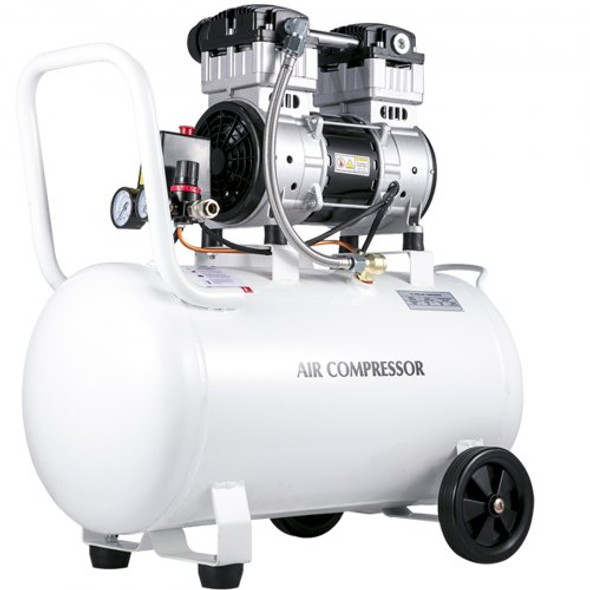| Specification |
Details |
| Model |
WAALPC AC2000 |
| Port Size |
¼″ NPT Female |
| Unit Type |
Filter-Regulator-Lubricator (FRL) |
| Filtration Element |
5 Micron (5 µm) |
| Pressure Regulating Range |
0–145 PSI (0–1.0 MPa) |
| Maximum Inlet Pressure |
232 PSI (1.6 MPa) |
| Gauge Range |
0–160 PSI (0–1.6 MPa) |
| Drain Type |
Manual Drain |
| Bowl Material |
Polycarbonate with Metal Guard |
| Operating Temperature |
41°F to 140°F (5°C to 60°C) |
Frequently Asked Questions (FAQ)
1. Why do I need an FRL unit for my air compressor? An FRL is critical for maintaining the health of your pneumatic tools. The Filter removes water and debris that cause internal rust and jamming. The Regulator provides stable air pressure, preventing damage from over-pressurization and ensuring consistent tool performance. The Lubricator provides a constant oil mist that reduces friction and wear on moving parts, dramatically extending the tool's lifespan.
2. What kind of oil should I use in the lubricator? It is recommended to use a high-quality, non-detergent oil specifically designed for pneumatic tools (like ISO VG32 or equivalent). Do not use motor oil or other household oils, as they can damage tool seals and O-rings.
3. How often should I drain the filter bowl? This depends on humidity levels and usage. It is good practice to check the bowl daily and drain it whenever moisture is visible. Never let the accumulated condensate rise above the filter element baffle.
4. How do I install this FRL unit? The FRL should be installed as close to the point of use (the tool) as practical, downstream from the main compressor tank. Ensure the airflow direction matches the arrow indicated on the FRL body. Use the included bracket to mount it securely to a wall or workbench.
5. Is this unit suitable for paint spray guns? While the filter and regulator are excellent for painting, the lubricator stage is not. Oil in the air line will contaminate the paint and ruin the finish. For painting, you should either use a filter/regulator unit without a lubricator (an FR unit) or install a bypass line that allows you to shut off the lubricator when spraying.






